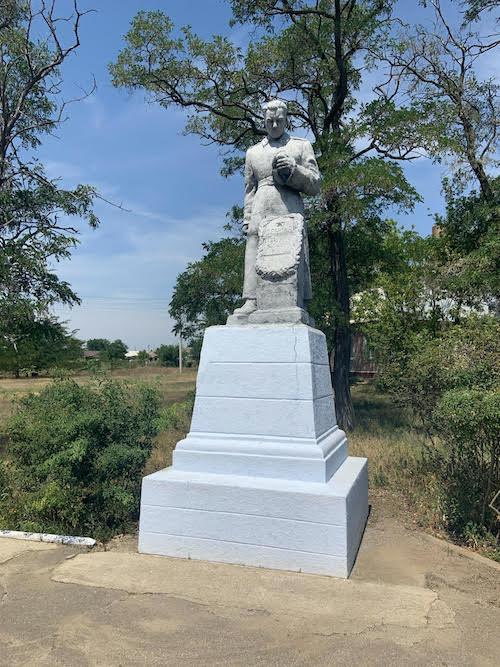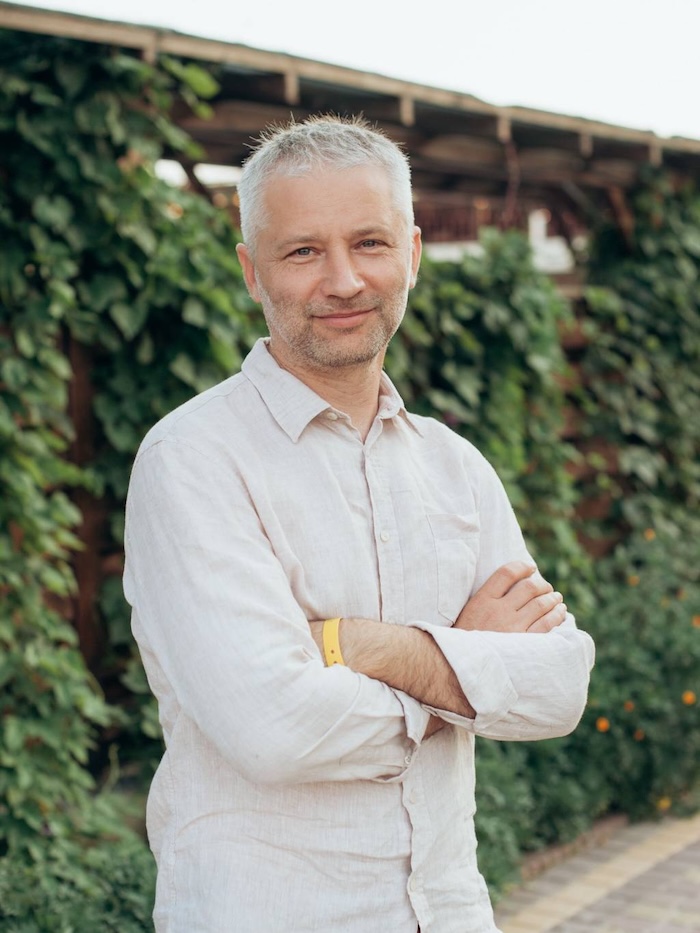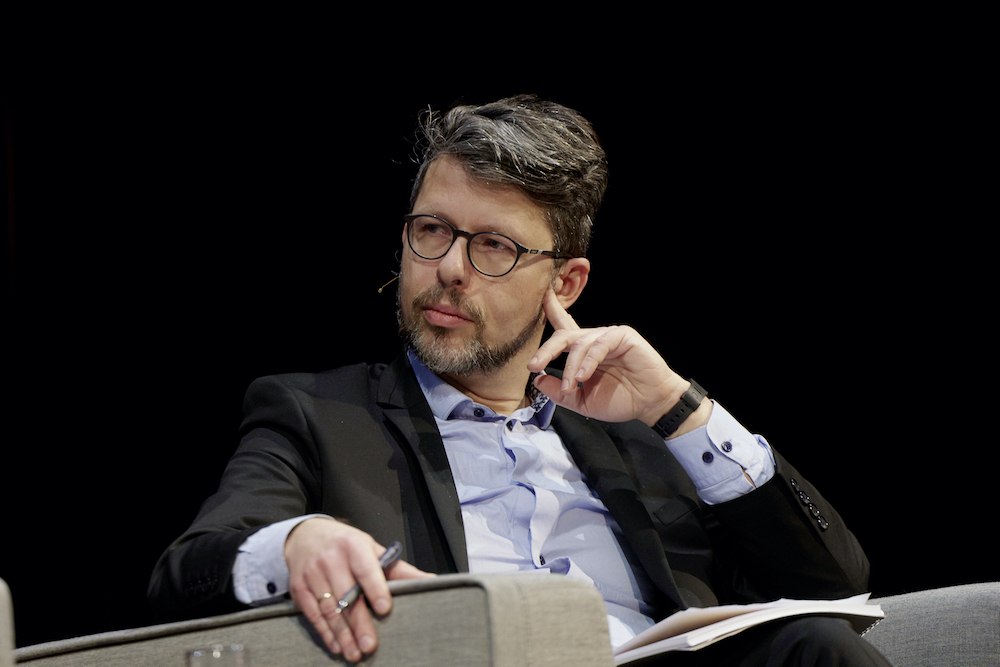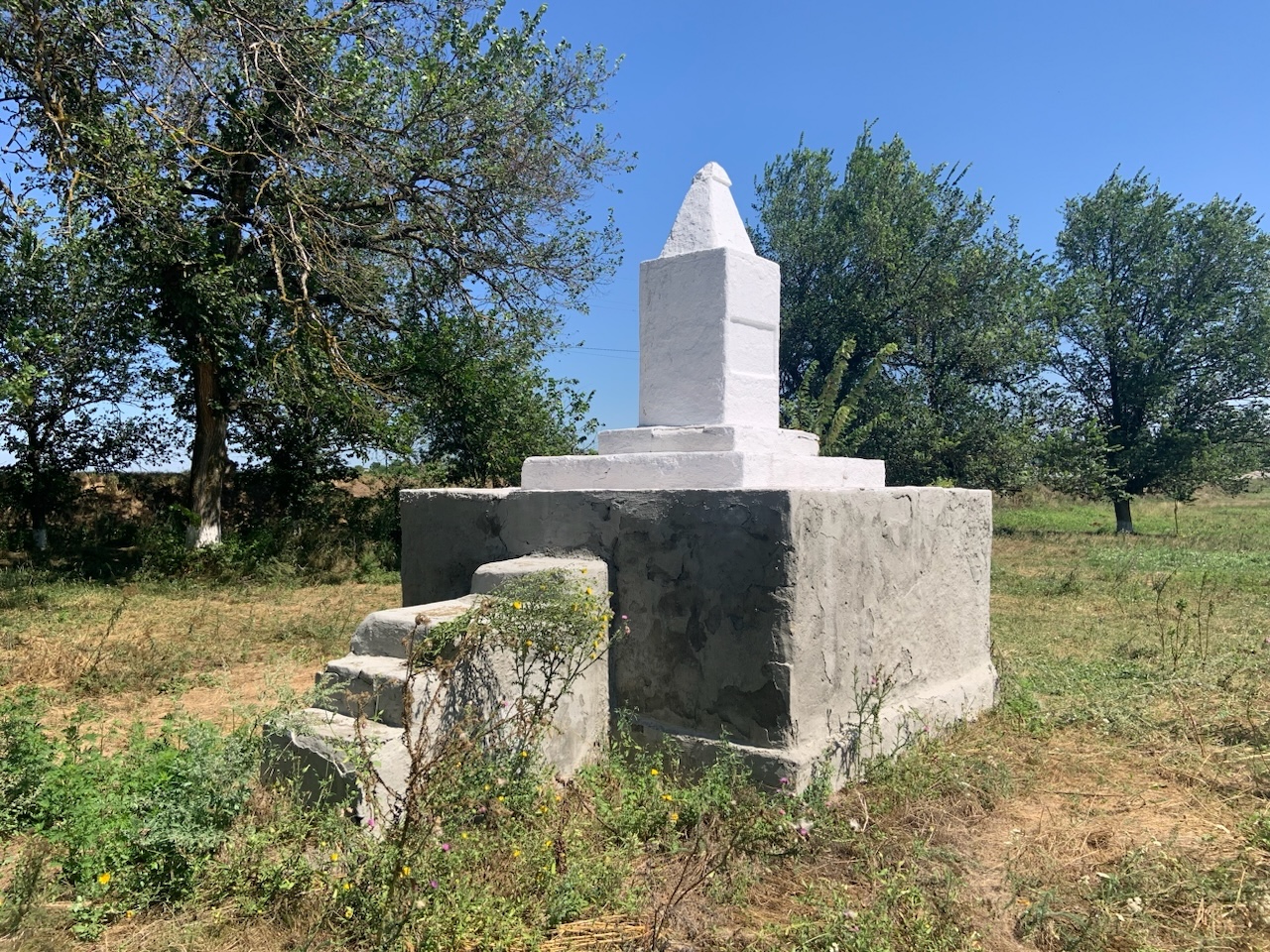War memorials, “a wound covered in granite”: an interview with historian Mischa Gabowitsch and sociologist Mykola Homanyuk
The role of war memorials goes beyond honoring the dead, they are tools of state-building, they shape collective narratives as well as offer spaces for personal mourning. Mischa Gabowitsch and Mykola Homanyuk have researched these topics by focusing on Soviet World War II monuments in different countries. As Ukrainians debate building a national memorial for the victims of the current war, looking at the past and at other countries can help reflect on a complex issue.
Can it be said that during the Soviet period, the larger a city was, the more ideology was put into the way World War II was commemorated? Why did city memorials differ from those in villages?
Mischa Gabowitsch: In the Soviet Union, no centralized agency was in charge of building war memorials. This may seem unexpected or ironic, but in the USSR — a centralized and totalitarian state — there was simply no central body controlled by the Communist party that would determine a common policy regarding the construction of monuments.
However, in many European countries such organizations did exist: they were founded after World War I.
Mykola Homanyuk: In Kyiv or in regional centers, memorials were definitely built under the supervision of regional or Republic-level committees. But in small towns or rural communities, those taking the initiative could be completely different. They could be a group of widows or veterans, for instance, or the head of a collective farm, a trade union, or an individual activist. Erecting a memorial entailed various connections between people. That’s why Ukraine’s World War II commemorative space is so diverse, with dimensions that require separate rethinking and approaches.
Mischa Gabowitsch: Archival sources show that even in regional centers — in Donetsk, for example — the initiative would very often come from local architects and sculptors, and only later would they get permission from the central authorities.

So this was a process of grassroots commemorations later reaching higher levels?
Mischa Gabowitsch: Not exactly grassroots, because these were very often people who enjoyed a certain social and cultural status within the Soviet system. The initiative of creating memorials would come from people who were neither "common" nor central figures. This could be a local sculptor who had connections in his town, but without heading the local branch of the Sculptors' Union.
Mykola Homanyuk: Grassroot initiatives appeared more recently, to maintain memorials. This is usually done by people who aren’t prominent, nor activists. They can be ordinary people who take care of monuments. Such grassroots initiatives became widespread after the collapse of the Soviet Union. World War II memorials often survived, and survive still today, thanks to them.
Was there any unified approach, for example, for what a monument to the unknown soldier, was supposed to look like?
Mykola Homanyuk: Here we need to talk about the different stages in which monuments were created. In the first stage, monuments were erected immediately after the end of the war. They were very simple: imagination was mainly limited to building materials. In the Brezhnev era, there were different standards. And in the late Soviet period, standards changed again.
Mischa Gabowitsch: In general, the Soviet Union almost always kept a classical and figurative aesthetic for memorials. This was also popular in European countries after World War I. Abstraction, non-figurative or anti-figurative experiments were practically absent in the Soviet tradition. The aesthetics were almost always quite conservative because that’s what generals, ordinary soldiers and relatives of the dead liked.
Mykola Homanyuk: The first stage was about obelisks and steles. Then, after the Soviet Union more or less recovered from the consequences of World War II, it began to massively erect realistic sculptures. And in the late Brezhnev era, the development of more stylized images began. If the Soviet Union had existed for another ten or fifteen years, sculptors would have produced abstract monuments, I think. There wasn't enough time for this evolution.
How did the commemoration of military and civilian war victims differ?
Mischa Gabowitsch: Very often the style was the same. Civilians who died in the war were not memorialized as victims, but almost as heroes.
Mykola Homanyuk: Monuments to civilian victims included monuments to Holocaust victims. They stood out: they were usually to “Soviet citizens who were tortured by the German-fascist invaders.” Monuments for Jewish victims were not marked as such. Monuments for civilians were much more modest, they usually had no figurative elements — basically, very simple obelisks or steles.
Civilian victims were presented in a heroic guise: the narrative stated that they hadn’t been shot just like that, but for civil resistance. This was a way to fit them into the pantheon of war heroes.
Mischa Gabowitsch: Among the monuments to the victims of the Holocaust, there were figurative examples, and many examples of grassroots initiatives. The historian Arkadi Zeltser wrote about this in his book, referring to almost a thousand examples of Soviet memorials to the victims of the Holocaust, mainly in Belarus and Ukraine.
Mykola Homanyuk: Figurative monuments to the victims of the Holocaust do exist, but they appeared much later.
Mischa Gabowitsch: Many memorials are gone because, after the first phase, they were replaced by others.

Mykola Homanyuk: I am from Kakhovka, and when I was a child, I would visit my aunt in Malokakhovka. I remember there was a memorial to the victims of the Holocaust. It was a very simple obelisk made of silicate brick, there wasn't even a plaque indicating this was for Holocaust victims. But people knew that “Jews were thrown into a well there”.
Sometime in the 2000s, a very emotional and unusual memorial appeared at that same place. From an artistic point of view, it seems nothing special, it's just a stele and plaques that describe the people who died, in as much detail as possible. Since there were few documents, those inscriptions were apparently based on oral sources. So they went something like this: "Shloma, who lived near the fire station"; "Aunt Pesya and her two children"; "a stable boy from Melitopolska Street". People simply remembered as much as they could about the dead.
This memorial made a very big impression on me. It's one thing to have standard lists of names that merge into one entity, but it's another when you imagine these people as personalities, someone’s relatives, neighbors.
Who put it up? Who took the initiative?
Mykola Homanyuk: To be honest, I don’t know because I don’t deal with issues related to the Holocaust. I think the Jewish community of the Kherson region took part, but locals definitely also contributed.
Did people start commemorating both military and civilians at the same time? Were any priorities set as to where resources should be directed, and which memorials built?
Mischa Gabowitsch: It depended on who built these memorials. Since there was, as I said, no single ministry for the construction of memorials, some people built memorials in cemeteries - military or civilian. Others chose different places.
Mykola Homanyuk: War memorials appeared first, they were very plain memorials set up by residents who remembered the location, for example, of a mass grave. Later they built a larger one, on state or factory funds.
You could say that fallen soldiers were given priority over civilians.
Mischa Gabowitsch: There were many cases of graves and monuments being moved. That is, immediately after the end of the war, monuments were mostly erected at the sites where people had died. Then, in the late 50s–early 60s, remains were transferred and new monuments were built in new places, in a new style. Very often a new narrative was present there, a new definition of those who were commemorated.
What do you mean by a new narrative?
Mykola Homanyuk: Let’s take, for example, monuments to unknown soldiers. They are usually located at sites where remains had been brought to — remains had been found, reburied and an Eternal flame was lit. This is a more modern practice. Eternal flames weren't installed in places where burials occurred during the war.
Mischa Gabowitsch: Very often, at first, people would know the name of a soldier buried at a certain place, but then on the new monument they would write “to the unknown soldier”. This was the case both in the Soviet Union and in other Socialist countries. At the end of the war they wrote all the names, and later they simply built anonymous cemeteries, like in Berlin’s Treptow park.
Why was this done?
Mischa Gabowitsch: I think, to emphasize the heroism of the Soviet people as a whole, and not specific people. To turn it into geopolitical propaganda, in a way.
This shift took place somewhere in the 1960s?
Mischa Gabowitsch: In some countries, it began as early as the 1940s: in Hungary, in Germany, and in other countries where there were Soviet soldiers. In the Soviet Union, there was a wave of centralization from the late 1950s and early 1960s. This was called “maintenance and beautification”, but in practice it amounted to gathering individual or small graves into memorial complexes. The authorities saw that very few people on the ground were ready to engage in maintaining a large number of graves. It was much easier to build centralized memorial complexes.
Were Holocaust victims and other civilians also reburied?
Mischa Gabowitsch: Yes, there were such reburials. But this is not only a Soviet tradition. It was done in many countries. It's a simple question of logistics, how to organize the graves of so many people.

How did commemoration differ on the other side of the “Iron Curtain”?
Mischa Gabowitsch: Things were much more individual there. In the US after the Civil War, and in Europe after World War I, there were many individualized graves.
In the Soviet Union, commemoration took place against the backdrop of a “No one is forgotten” narrative, but in practice there was anonymization and hierarchization. There were, for example, separate cemeteries for officers and for ordinary soldiers — this is an exclusively Soviet practice.
The concept of the tomb of the unknown soldier appeared after World War I in Great Britain, right?
Mischa Gabowitsch: In Europe, yes. In the British tradition, they wrote, “Known unto God” when they didn't know the name of a buried soldier. In the Soviet Union after the World War I, this new culture of commemoration was considered “imperialist”, “bourgeois” and unnecessary. There were a few experiments commemorating those killed in the 1917–1922 Civil War, but mostly the entire tradition that began in Europe after World War I came to the USSR later, after World War II.
Many artists, sculptors, and architects knew very well what was happening in Europe because they’d studied there. For example, the chief architect of Moscow’s Palace of the Soviets, Boris Yofan, had studied in Rome during World War I. He did his thesis on the monuments to Italian soldiers who’d died in that war. The sculptor Yevhen Vuchetich was very familiar with Riga's Fraternal cemetery, whose construction had started after World War I. If you look at how he designed Treptow Park in Berlin, you can see the influence.
In discussions about the culture of war memorials in today’s Ukraine, a lot of people look to Arlington in the USA. Why, in your opinion?
Mischa Gabowitsch: Arlington has been a well-known name to many people for a long time. After the American Civil War of the 1860s, people in the USA began to think very intensively about what to do with the large number of soldiers’ remains. They developed a system of national cemeteries. Arlington became a symbol of respect and individualization of memory. It inaugurated one of the world traditions of commemorating soldiers without any hierarchy. There was little difference between a monument to a general or to an ordinary soldier. This tradition then arrived in Europe and Asia after World War I.
Another tradition is the Soviet one, which was established after the October Revolution. It is, ironically enough, hierarchical. That is, burials are arranged in concentric circles: at the center were always the “most important” heroes and leaders of the revolution, around them were other party members, and everyone else was at the periphery. This tradition spread to many Socialist and post-colonial countries.
So for many countries oriented towards the Western tradition, Arlington has become the symbol of a non-hierarchical commemoration.
There are good lessons to be drawn from Arlington, but surely, it can also be looked at critically?
Mischa Gabowitsch: Arlington embodies a tradition of state-centered commemoration. If a soldier is buried in a national cemetery, it means this person belongs to the state, one might say. He is part of the state and its tradition, and is not, for example, part of a family. That is, this same person can be buried in a civilian cemetery, but if he is laid to rest in a national cemetery, he becomes part of a tradition of the army and the state, forever.
Mykola Homanyuk: Well, you can’t bring a pasochka to Arlington cemetery, you can’t sit there, you can’t commemorate your lost one.
Mischa Gabowitsch: One of the problems with a model like Arlington is that it’s very difficult to hold a personalized commemoration in such a cemetery.
What do we know about a soldier who is buried in Arlington or in another military cemetery? His name, date of birth, military status and religion. Nowadays, a tradition of more personalized commemoration has emerged, in which we tell something personal about the deceased: their personality, their relationships with other people. Many personal items are brought to graves. This practice can be quite difficult to implement in more official state military cemeteries, where everything is strictly regulated.

Where, in your opinion, do war memorials meet with the personal experience of mourning and overcoming grief? Can the building of memorials help with the collective experience of grief?
Mykola Homanyuk: At the Museum of Ukraine’s History in World War II, several exhibitions are dedicated to the current war and to the fallen heroes. I spoke with people who work there, and they told me that people bring flowers and cemetery lamps to that exhibition, turning the museum into a pantheon. In this sense, we see a certain tension between people who want to honor their loved ones in their own way, and the state, which sees things differently. And we see how memorials are now being created.
We see that a certain canon is being created. There must be a photograph, and the photograph is usually an amateur one, not from documents but from a photo album or made with a phone. Information is given about a person’s place of origin, where and how they died. There are always flowers and candles. Such memorials look more like our ordinary civilian cemeteries than Arlington’s or other large state memorials.
Maybe this is where the tension lies. There is a bleeding wound, and we are trying to cover it with granite.
Mischa Gabowitsch: This is a question, one might say, of commemorative success related to the issue of place.
In the Soviet period, it was difficult to find the grave of a specific person and there were very few places where you could honor the memory of your father or brother.
There were more abstract monuments or monuments to people who had liberated a certain town. And controversies surrounded this: should we erect a monument to people who weren't from this same town but came as Soviet soldiers to liberate it?
But this, again, was not only a Soviet problem. For example, very early on after the World War I, the British Imperial Commission for War Burials decided that it would not rebury British soldiers who’d died in continental Europe because that would mean people who had a lot of money would be able to pay for such a transfer while the poor would not. And so they decided to leave everyone in Belgium, France, and so on. Many people could not afford to travel there. So people in the UK developed an entire infrastructure, with books and lists, to give families the opportunity to honor their dead.
And I think that, now in Ukraine, this is also a relevant question: where to bury soldiers — in their region, or in a central cemetery? We need to think a lot about how this central cemetery, memorial, monument, however it is defined, will work as a place where you can come to remember an individual person.
State representatives in Ukraine argue that a national cemetery, with a space for memory and education, is needed because people would be able to go there in 50 years’ time and know what this war was about. What do you think of such an approach?
Mykola Homanyuk: I will only say that different commemorative practices solve different problems. If the state solves one problem, it does not mean that another will automatically be solved — for example, the need for people to remember a fallen hero in the city or village where he or she came from.
Mischa Gabowitsch: This raises the classic question of the transition from communicative to cultural memory. There is a difference between the need to remember, which relatives and friends experience, and national-state problems.
I think that in 50–60 years it would be nice if there were one or more symbolic places where you could come and learn something about the Russian-Ukrainian war, which will have already passed into history. But there will still be local, family commemorations, for which smaller places of memory are needed.
Translated from Ukrainian by re/visions.
